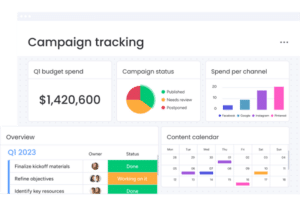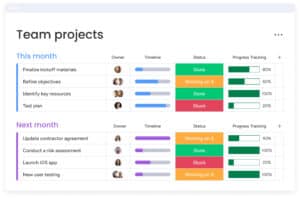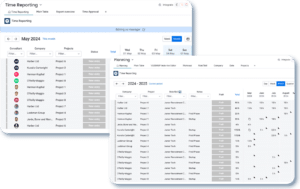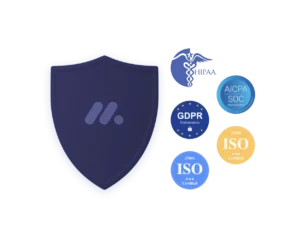Introduction
Why Stakeholder Communication is Non-Negotiable in Projects
In any project, communication is not just a requirement—it’s an art that can make or break your success. Whether you’re rolling out a new software application or navigating a complex merger, your stakeholders are your lifeline. They provide resources, feedback, and expertise, and often have a vested interest in the project’s success. However, miscommunication or lack of communication can lead to delayed timelines, cost overruns, and overall project failure. Let’s go through some best practices for stakeholder communication during projects so you can avoid bumping into these types of challenges.
Common Pitfalls in Stakeholder Communication
While most project managers recognize the importance of effective communication, the reality often falls short. Lack of transparency, irregular updates, and failure to address the unique needs of different stakeholders are common mistakes that can strain stakeholder relationships.
Navigating the Complexity
This comprehensive guide is designed to arm you with the best practices for stakeholder communication during projects. We will delve into identifying who your stakeholders are, the key principles for effective communication, tools that can make your life easier, and much more.
Why Stakeholder Communication Matters
The Cornerstone of Project Success
Whether you’re in sales, marketing, IT, HR, or any other department, effective stakeholder communication is often the cornerstone of project success. Communication is the conduit through which information flows, ensuring that everyone—from team members and supervisors to clients and investors—is on the same page. When communication is streamlined and effective, projects tend to run smoothly, adhere to timelines, and meet or exceed expectations.
The Impact on Project Outcomes
Studies have consistently shown that poor communication can lead to disastrous project outcomes. Ineffective communication is the primary contributor to project failure one-third of the time, and has a negative impact on project success half the time. The figures speak for themselves—ignoring the principles of effective stakeholder communication can be costly.
Real-World Statistics: A Wake-up Call
To put it into perspective, here are some real-world statistics that underscore the importance of stakeholder communication:
- The Holmes Report estimated that the cost of poor communication has hit an overwhelming $37 billion.
- A study by Salesforce indicated that 86% of employees and executives cite a lack of collaboration or ineffective communication for workplace failures.
These numbers provide a wake-up call for why adopting best practices for stakeholder communication during projects is not just an option but a necessity.
Long-Term Relationships and Stakeholder Trust
Beyond the immediate scope of a project, effective communication also builds long-term relationships and trust between stakeholders and the project team. This can lead to more collaboration, additional project opportunities, and a more favourable business environment overall.
Identifying Stakeholders
The First Step in Effective Communication
Before you can dive into the nitty-gritty of stakeholder communication, the first crucial step is to identify who your stakeholders are. Misidentifying or overlooking key stakeholders can lead to inadequate communication and ultimately, project failure. When you know who you’re talking to, you can tailor your messaging, frequency, and communication methods to meet their specific needs and expectations.
Stakeholder Register: Your Go-To Tool
One proven approach to effectively identify stakeholders is by creating a stakeholder register. This document serves as a centralized repository containing information about everyone who has an interest or stake in your project. A well-constructed stakeholder register should include:
- Name and Position: Basic identification information.
- Role in the Project: Are they a sponsor, end-user, or perhaps a regulatory body?
- Contact Information: Including multiple channels if possible.
- Communication Preferences: Do they prefer email, phone calls, or face-to-face meetings?
- Influence Level: How much sway do they have over the project’s outcomes?
Creating a stakeholder register not only helps in identifying who your stakeholders are but also provides an organized structure to manage and analyze stakeholder communication needs.
Levels of Engagement: RACI Matrix
Another tool that complements the stakeholder register is the RACI matrix, which stands for Responsible, Accountable, Consulted, and Informed. By using this matrix, you can further categorize stakeholders based on their level of engagement in the project:
- Responsible: Those who do the work.
- Accountable: The person ultimately answerable for the correct and thorough completion of the deliverable or task.
- Consulted: Those whose opinions are sought; two-way communication.
- Informed: Those who are kept up-to-date on progress; one-way communication.
The RACI matrix can be invaluable in ensuring that you’re communicating with all stakeholders at the appropriate level and through the appropriate channels.
Cross-Industry Applicability
It’s worth noting that these tools and techniques for identifying stakeholders are not confined to a particular industry. Whether you’re in marketing, HR, IT, or any of the 40+ industries that could benefit from effective project management, these methods are universally applicable.
Omnitas Newsletter
Sign up for our monthly newsletter to stay up-to-date on our latest blog articles, videos and events!
Thank you!
You have successfully joined our subscriber list.
Different Types of Stakeholders
The Diverse Landscape of Stakeholder Involvement
In every project, stakeholders come in different shapes and sizes, metaphorically speaking. Some are internal to your organization, like team members and executives. Others are external, such as customers, investors, or regulatory bodies. Understanding the different types of stakeholders is crucial for applying the best practices for stakeholder communication during projects.
Internal Stakeholders: The Home Team
- Team Members: Often the most directly involved, requiring frequent and detailed updates.
- Managers and Executives: Interested in high-level updates and how the project aligns with organizational goals.
- Other Departments: May be indirectly impacted by the project and thus need to be kept informed.
Communication Tip for Internal Stakeholders
Internal stakeholders often prefer more informal channels of communication like internal messaging platforms, team meetings, or direct emails. However, it’s essential to gauge preferences and adjust your approach accordingly.
External Stakeholders: Outside the Four Walls
- Clients and Customers: The reason behind most projects; they require clear, concise, and regular communication.
- Investors: Interested in the project’s progress, especially as it impacts ROI.
- Suppliers and Partners: Need to be aligned with your timelines and deliverables.
- Regulatory Bodies: Must be kept in the loop to ensure compliance.
Communication Tip for External Stakeholders
Given the diverse needs and expectations of external stakeholders, more formal communication methods like official reports, scheduled meetings, and contractual updates are often preferred.
Tailoring Communication Strategies
Understanding the different types of stakeholders allows you to tailor your communication strategies effectively. This involves not just selecting the right communication channel, but also customizing the message and frequency of updates based on stakeholder needs.
Case in Point: Adapting Approaches
If you’re working on an IT project, your developers might need daily stand-up meetings for task coordination, whereas regulatory bodies may only require bi-weekly compliance updates. The key is to adapt your communication style and medium to meet the specific needs of each stakeholder type.
Universality Across Industries and Verticals
The best practices for stakeholder communication during projects are universally applicable, whether you’re in Sales, Marketing, Operations, or any other vertical. Tailoring your approach to different stakeholder types will optimize communication and set the stage for project success.
Key Principles of Effective Stakeholder Communication
The Pillars of Communication Success
Now that we’ve discussed the importance of stakeholder communication, and how to identify who your stakeholders are, let’s delve into the foundational principles that guide effective communication. Following these principles is essential for anyone keen on implementing the best practices for stakeholder communication during projects.
Transparency: The Bedrock of Trust
- Open Dialogue: Keep stakeholders informed about both the successes and challenges of the project.
- Clear Objectives: Clearly communicate the project’s objectives, scope, and constraints to avoid misunderstandings.
Transparency in Action
For instance, if there’s a change in the project timeline or budget, stakeholders should be informed as early as possible. This fosters trust and allows them to adjust their expectations and plans accordingly.
Consistency: Establishing Reliable Communication Channels
- Regular Updates: Whether it’s weekly email summaries or monthly progress reports, keep the communication consistent.
- Standardized Templates: Use standardized communication tools or templates to maintain uniformity.
Maintaining consistency is especially crucial when dealing with multiple stakeholders who have varying levels of involvement and interest in the project.
Relevance: Know What to Communicate and When
- Layered Information: Different stakeholders require different levels of detail. Tailor your communication accordingly.
- Timely Updates: Make sure to communicate relevant information at the right time to avoid overload or confusion.
Let’s say you’re working on a marketing project. While the marketing team may need real-time analytics, the CEO may only require a monthly summary of key performance indicators (KPIs).
Feedback Loops: The Importance of Two-Way Communication
- Soliciting Feedback: Always leave room for stakeholders to express their concerns, opinions, or suggestions.
- Active Listening: Take stakeholder feedback seriously and act on it where applicable.
Establishing a feedback mechanism isn’t a one-off task; it’s a continual process that helps adapt and improve the project as it progresses.
Flexibility: Adapting to Changing Needs
- Agile Methods: Be prepared to adapt your communication strategies as project requirements change.
- Technology Aids: Utilize modern tools and platforms to facilitate easier, quicker communication.
Flexibility is especially vital in fast-paced industries or projects with frequent changes. The key is to be agile without sacrificing clarity and accuracy.
Tools and Platforms for Stakeholder Communication
The Digital Aids to Traditional Communication
In today’s digital age, relying solely on emails or face-to-face meetings for stakeholder communication isn’t practical. Leveraging modern tools and platforms can greatly enhance your efforts, aligning them with best practices for stakeholder communication during projects.
Project Management Software: The All-in-One Solution
- monday.com: A highly customizable platform that allows for easy communication and project tracking. Great for teams that are geographically dispersed.
- Jira: Ideal for software development projects, offering robust features to track issues and manage tasks.
These platforms often come with dashboards, reporting features, and integration capabilities, making it easier to centralize all project-related communications and files.
Messaging Apps: Quick and Informal Communication
- Slack: Offers channel-based communication, making it easy to separate discussions based on teams or projects.
- Microsoft Teams: Allows integration with Microsoft Office tools and is excellent for internal communications.
These apps are best for quick updates, clarifications, or sharing urgent information with team members and internal stakeholders.
Video Conferencing Tools: The Next-Best Thing to In-Person Meetings
- Zoom: Known for its ease of use and stability.
- Google Meet: Offers tight integration with other Google Workspace tools.
Regular video check-ins or milestone meetings can significantly improve transparency and offer a platform for more detailed discussions with stakeholders.
Workflow Automation Platforms: Streamline Repetitive Tasks
- Make: Allows you to automate workflows, integrating multiple tools and platforms to streamline project communication.
Automated notifications or updates can be sent to stakeholders at specific milestones, saving time and reducing the chance of human error.
Customized Solutions: Combining Multiple Tools
It’s often effective to use a combination of these tools to cover all bases. For example, you might use monday.com for project tracking, Slack for quick internal communication, and Zoom for detailed client meetings.

Creating a Communication Plan
The Blueprint for Success
A well-crafted communication plan serves as the blueprint for how you’ll interact with stakeholders throughout the project. This plan should be comprehensive yet flexible enough to adapt to changing circumstances. Formulating a sound communication plan is indispensable when adhering to the best practices for stakeholder communication during projects.
Components of a Communication Plan
A typical communication plan will contain the following elements:
- Communication Objectives: The ‘why’ behind your communication efforts.
- Stakeholder Identification: A list of all internal and external stakeholders.
- Communication Channels: Which tools or platforms will be used?
- Frequency and Timing: When and how often you’ll communicate.
- Responsible Parties: Who will handle different aspects of communication?
Remember, a communication plan is not a one-time document; it should evolve as the project progresses.
Aligning with Stakeholder Needs
The communication plan should be tailored to meet the unique needs and expectations of different stakeholder groups. Consider the frequency, depth, and type of communication that each stakeholder requires.
For instance, if you’re in a project involving multiple departments, the HR department might only need bi-monthly updates, while the finance department could require weekly financial reports.
Measuring Effectiveness: KPIs and Feedback
Include key performance indicators (KPIs) to gauge the effectiveness of your communication efforts. Regularly seek feedback from stakeholders to adjust your approach.
Some useful metrics might include stakeholder engagement levels, the timeliness of communication, and stakeholder satisfaction scores.
The Vitality of Planning
Creating a comprehensive communication plan is a significant step in ensuring you adhere to the best practices for stakeholder communication during projects. It sets the course for effective and transparent communication, which in turn plays a pivotal role in the project’s success.
Overcoming Common Communication Challenges
Navigating the Rough Seas
Even with the best-laid plans, you’re likely to face challenges that can obstruct effective stakeholder communication. Recognizing these challenges and knowing how to overcome them is crucial for implementing the best practices for stakeholder communication during projects.
Challenge 1: Information Overload
- The Problem: Flooding stakeholders with too much information can lead to confusion or disengagement.
- The Solution: Prioritize and tailor your messages. Make sure to provide just enough detail to keep stakeholders informed but not overwhelmed.
Use bullet points, headings, or even infographics to make your communications more digestible. A well-structured project dashboard can also help to present information in an easily understandable format.
Challenge 2: Inconsistent Messaging
- The Problem: Mixed messages can create confusion and reduce stakeholder confidence.
- The Solution: Maintain a single source of truth for project information. Make sure all team members are aligned on messaging.
Having a centralized project management system or a communication hub can help in ensuring message consistency across different channels.
Challenge 3: Language and Cultural Barriers
- The Problem: Projects involving stakeholders from different regions may suffer from misunderstandings due to language or cultural differences.
- The Solution: Use simple, clear language and be aware of cultural norms when communicating.
When necessary, use translation services and seek to understand the cultural nuances that might influence how your communication is received.
Challenge 4: Remote Communication
- The Problem: Geographical separation can lead to feelings of isolation among stakeholders.
- The Solution: Utilize video conferencing and regular check-ins to keep remote stakeholders engaged.
Use digital tools that facilitate collaboration and a sense of connection among team members, regardless of their location.
Challenge 5: Unforeseen Changes and Obstacles
- The Problem: Unexpected events can disrupt planned communications.
- The Solution: Have a contingency plan and be prepared to adapt your communication strategy as needed.
Flexibility is key. Make stakeholders aware that changes are a natural part of any project and update them promptly when changes occur.
Best Practices Summarized
The Final Takeaway
As we reach the end of this comprehensive guide, let’s recap the key points to remember for ensuring effective stakeholder communication during your projects. These are the actionable takeaways that epitomize the best practices for stakeholder communication during projects.
1. Understand Why Communication is Important
- Prioritize stakeholder communication as a cornerstone of project management.
2. Identify Your Stakeholders
- Know who needs to be communicated with and tailor your approach accordingly.
3. Know Your Types of Stakeholders
- Understand the different roles and interests of stakeholders to engage them more effectively.
4. Adhere to Key Communication Principles
- Be transparent, consistent, and relevant, while maintaining open feedback loops and being flexible.
5. Leverage the Right Tools
- Choose platforms and tools that suit your project’s specific needs and stakeholder preferences.
6. Develop a Robust Communication Plan
- Create a detailed communication plan, adapt it as needed, and make sure to measure its effectiveness.
7. Overcome Communication Challenges
- Anticipate potential challenges and have strategies in place to deal with them.
8. Keep Learning and Adapting
- Project management and stakeholder communication are dynamic fields. Continually adapt and improve your practices based on feedback and experience.
Conclusion: The Path to Project Success Through Effective Communication
As we’ve explored in this comprehensive guide, effective stakeholder communication is not just a supportive element of project management—it’s a critical factor that can determine the success or failure of your projects. From understanding the importance of communication and identifying your stakeholders to overcoming challenges and leveraging the right tools, each aspect contributes to the grand puzzle. Employing the best practices for stakeholder communication during projects will not only streamline your processes but also build stronger, more transparent relationships with your stakeholders.
A Continuous Learning Journey
Remember, the landscape of project management and stakeholder communication is ever-changing. As technologies evolve and stakeholders’ expectations shift, so should your strategies. Continual improvement is the key to long-lasting success in any project environment.
Don’t Miss Out on More Insights!
If you’ve found this guide valuable, you won’t want to miss our future content. Subscribe to our monthly newsletter to keep up-to-date with the latest in project management, stakeholder communication, and much more. Unlock a treasure trove of insights, tips, and best practices that can propel you and your projects toward success.
























